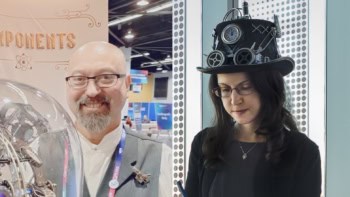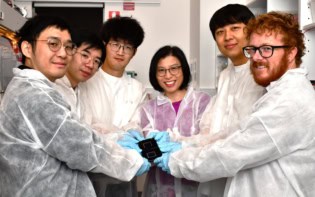This short film by Lucina Melesio will take you into the darkrooms of New York City to meet the purists who are still practising the art of analogue photography.
“We’re an endangered species,” says Jonathan Rodgers, a 26 year old who has recently co-founded a community darkroom in the Gowanus neighbourhood of Brooklyn. “I think being an enthusiast of analogue photography, you do have to be a little bit of an activist because there is a push to make everything digital nowadays.”
Rodgers says he is not anti-digital but prefers the tangible connection you have when developing and printing photographs. “You have a much bigger connection to it. You see it happening, you see the process, you have control over it,” he says. Rodgers co-founded the Gowanus darkroom with his partner in response to hearing about various darkroom closures across New York City.
Also profiled in the film is Veronica Hodgkinson, who describes herself as an experimental photographer. Hodgkinson uses a camera-less photography technique to create “chemigrams” – colourful patterns produced by exposing old photographic paper to light in varying chemical and atmospheric conditions. “My father had a darkroom when I was little, so I’m used to the smell of chemistry, so it’s a bit of nostalgia for me,” she says. Hodgkinson believes that the recent rapid rise of digital photography has actually helped to spur analogue photography as well. “People have gone ‘Hey, I can sit in front of a computer all day, or I can be developing prints and playing it that way.’ I enjoy being up on my feet, walking around and trying different things,” she says.
This is film number four in a series we have commissioned for the International Year of Light (IYL 2015), with each film telling local stories involving light and its applications and how they can affect people’s lives. The first film in the series followed an amateur astronomer seeking out a patch of dark sky amid the dazzling lights of New York City. The second was a film about the role of light in regulating sleep cycles and the third looked at how LED lights are helping students in a remote Indian community to study after sunset.
- To find out more about light and its applications, take a look at the March special issue of Physics World. If you’re a member of the Institute of Physics (IOP), you can get immediate access to the special issue about light in our lives with the digital edition of the magazine on your desktop via MyIOP.org or on any iOS or Android smartphone or tablet via the Physics World app, available from the App Store and Google Play. If you’re not yet in the IOP, you can join as an IOPimember for just £15, €20 or $25 a year to get full digital access to Physics World.



